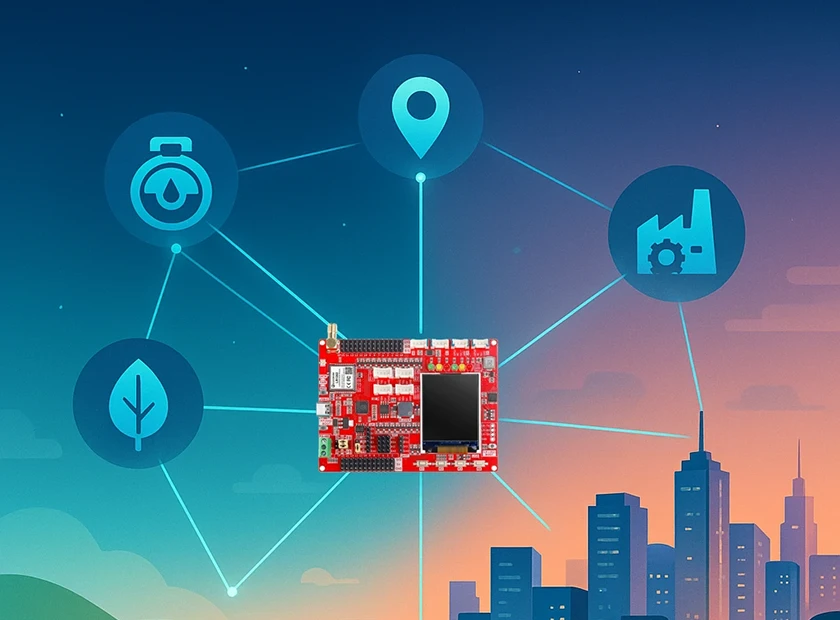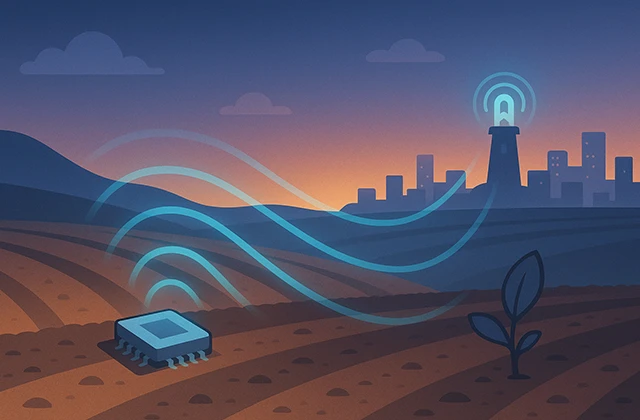Why LoRa is Revolutionizing Wireless Communication

Imagine a world brimming with connected devices – sensors monitoring vast farmlands, smart meters optimizing energy in sprawling cities, trackers keeping tabs on valuable assets across continents. This isn't science fiction; it's the promise of the Internet of Things (IoT). But turning this vision into reality hinges on a critical challenge: reliable, long-range, and power-efficient wireless communication. While technologies like Wi-Fi and cellular have their place, they often struggle with range limitations or high power demands for simple sensor data. Enter LoRa, a disruptive force fundamentally changing how we think about connecting the unconnected. Are you ready to explore how this remarkable technology works and why it's becoming a cornerstone of modern IoT?
Beyond the Limits: What Sets LoRa Apart?
At its heart, LoRa (short for Long Range) is a physical layer modulation technique for wireless communication. Unlike traditional methods that might require significant power to shout data across distances, LoRa employs a unique spread spectrum technique, specifically Chirp Spread Spectrum (CSS). Think of it like a sophisticated whisper that can still be heard clearly across a noisy room, even from far away. This inherent efficiency is LoRa's superpower. It allows small, battery-powered devices to transmit data over kilometres (sometimes tens of kilometres in ideal line-of-sight conditions) while sipping power, potentially lasting years on a single coin cell battery. This combination of long range and low power consumption makes LoRa technology incredibly compelling for a vast array of applications where frequent battery changes or mains power are simply impractical.

LoRa is Revolutionizing Wireless Communication
Peeking Under the Hood: The Magic of LoRa Modulation
So, how does LoRa achieve this feat? The magic lies in Chirp Spread Spectrum (CSS). Instead of transmitting on a narrow frequency band, LoRa spreads the signal across a wider channel using a 'chirp' – a signal that continuously varies in frequency, either increasing (up-chirp) or decreasing (down-chirp). This spreading makes the signal highly resilient to interference and noise, allowing receivers to pick it out even when it's below the noise floor. Key parameters define a LoRa transmission:
Spreading Factor (SF): Determines how much the signal is spread. Higher SF means longer range and better sensitivity but lower data rate. Lower SF offers higher data rates but less range. Choosing the right SF is crucial for balancing these factors in a LoRa network.
Bandwidth (BW): The width of the channel used for the chirp. Common bandwidths for LoRa include 125 kHz, 250 kHz, and 500 kHz.
Coding Rate (CR): Adds forward error correction bits to the data payload, enhancing reliability at the cost of slightly increased transmission time.
By intelligently managing these parameters, LoRa provides a flexible framework for diverse wireless communication needs. Often, LoRa is used in conjunction with the LoRaWAN (Long Range Wide Area Network) protocol, which defines the network architecture and communication protocols, managing aspects like device addressing, data security, and network communication between end-nodes, gateways, and network servers. This creates a complete ecosystem for deploying large-scale LoRa-based IoT solutions.
Where LoRa Shines: Real-World Applications
The unique characteristics of LoRa technology open doors to countless innovative applications:
Smart Agriculture: Monitoring soil moisture, temperature, and humidity across vast fields to optimize irrigation and resource use.
Industrial IoT (IIoT): Tracking equipment status, monitoring environmental conditions in factories, and enabling predictive maintenance over large industrial sites using LoRa sensors.
Smart Cities: Managing street lighting, monitoring parking space availability, reading utility meters remotely, and tracking waste management assets – all powered by efficient LoRa communication.
Asset Tracking: Locating and monitoring valuable assets, vehicles, or even livestock over wide geographical areas without draining batteries quickly, a perfect fit for LoRa.
Environmental Monitoring: Deploying sensors in remote or hard-to-reach locations to monitor air quality, water levels, or wildlife activity, leveraging the long-range capability of LoRa.
The potential is immense, limited only by imagination and the drive to innovate. The accessibility and performance of LoRa are empowering developers and businesses worldwide.
Ready to Join the LoRa Revolution?
Feeling inspired by the potential of LoRa wireless communication? Are you eager to get hands-on and build the next generation of connected devices? The growing ecosystem around LoRa makes it easier than ever to start experimenting. Opportunities like the one currently offered by Elecrow (as detailed on their linked page) – featuring LoRa module giveaways and PCB assembly sponsorship – provide fantastic avenues for innovators, hobbyists, and engineers to dive into LoRa development, test their ideas, and contribute to this exciting technological wave. Exploring such initiatives can be the perfect catalyst to turn your LoRa-powered concepts into reality.
Connecting the Future with LoRa
LoRa technology stands out as a powerful enabler for the Internet of Things, effectively addressing the critical need for long-range, low-power wireless communication. Its clever use of Chirp Spread Spectrum modulation, combined with the comprehensive LoRaWAN protocol, provides a robust and versatile platform for connecting devices previously out of reach. As the world becomes increasingly interconnected, LoRa is undoubtedly playing a pivotal role in shaping a smarter, more efficient future.
